If you are like most people, you only get concerned about tire tread depth when you notice that your tires are not gripping the road like they used to, or when you take your vehicle in for service and are told your tires need replacing.
However, the reality is that knowing what your tire tread depth in millimetres (mm) is – and knowing how to measure tire tread depth – is important information to know as a driver. Tire tread depth can affect your driving and your safety on the road very quickly, as a tire with worn out tread won’t give you the traction you might need in certain driving conditions, such as wet or snowy roads.
You may be wondering how to check the tire tread on your vehicle. Luckily, measuring tire tread depth is relatively easy and there are a couple of ways to do so. One easy way involves using a coin, such as a Canadian dime or quarter. Another is with a tire tread depth gauge. Below, we explain these two methods in better detail.
For real accuracy in checking tread wear, you may want to check the depth with a tire tread gauge. The latter are easily found at all your local hardware stores and online, and the ones that are sold for home use are relatively inexpensive.
When checking with a tread depth gauge, simply ensure your vehicle is parked securely, and then take the gauge and insert it into the grooves (cutouts) on the tread of your tire. When the head of the gauge touches the inside of the tread, you can then read the tire gauge (just like a tire pressure gauge) and see what your tread depth is in mm (millimetres). Any tread depth over 6 mm means your tires are safe and you can continue using them.
If you tire tread depth is 4/32”, then it is time to start looking for a new set of tires. And, if your tire tread depth is 2/32” or less, then you are actually driving in a highly dangerous condition and should seek to purchase a new set of tires immediately. A tread depth of 2/32” or lower can significantly impact your ability to stop safely in wet or snowy conditions, and is considered to be very unsafe.
A tread depth of 2/32” or lower can significantly impact your ability to stop safely in wet or snowy conditions, and is considered to be very unsafe.
One of the simplest ways to quickly check tire tread in Canada is by using a coin, such as a dime (10 cent coin). So, go head and dig into that coin jar, or under the couch cushions and look for a dime or a quarter.
Again, ensure that your vehicle is parked safely and securely first. Then, take a dime and turn it so that the Queen’s head is facing towards the ground – no disrespect to the Queen – and insert the coin into your tire tread groove. If the Queen’s head – including her crown – are fully visible to your eye, then it is time to replace your tires – ASAP.
If you see less of the Queen, then it is likely your tread depth is 4/32” or higher, meaning you should keep your eyes on your tires, but that you are likely safe enough to continue driving.
If you don’t have a dime handy, you can also use a Canadian quarter to check tire tread depth in Canada.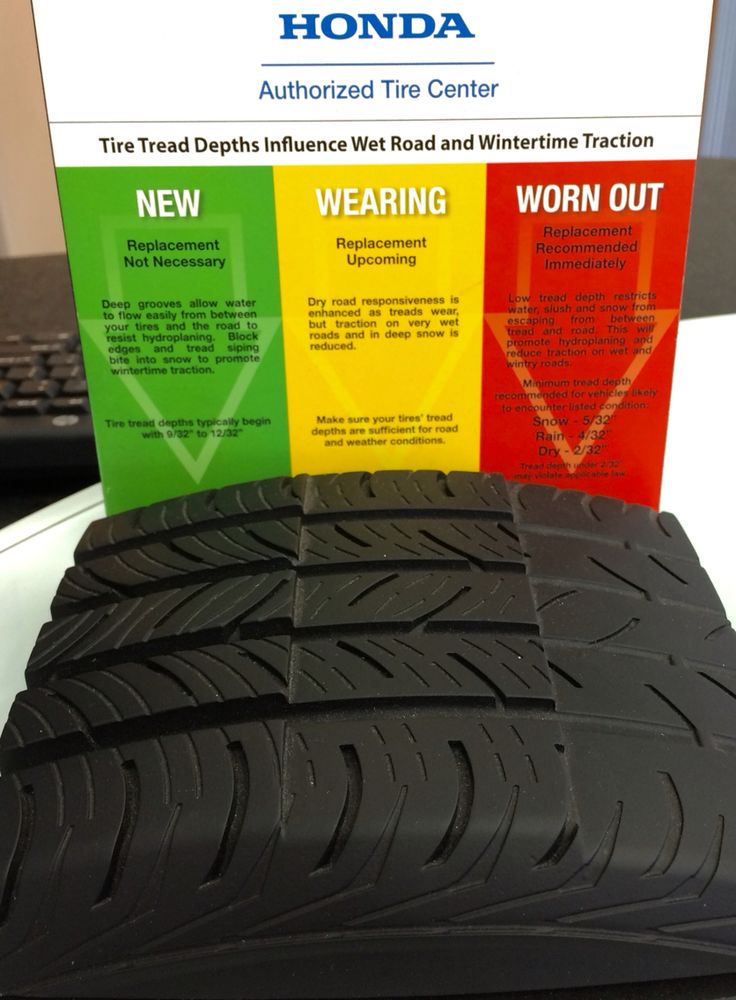 Following the same rules as checking with a dime, when you insert your quarter into the tread with the Caribou’s head facing down. If you can still see the Caribou’s nose, you are starting to experience a lower tread depth and should start looking for a new set of tires.
Following the same rules as checking with a dime, when you insert your quarter into the tread with the Caribou’s head facing down. If you can still see the Caribou’s nose, you are starting to experience a lower tread depth and should start looking for a new set of tires.
It is best to check each of your four tires, just to be completely safe, especially if you have replaced single tires over the years and are driving with a mismatched set, or tires from different brands. Tires all wear quite differently, and the average tire tread life can vary between different brands and types, so it is possible that one or two tires have less tread depth than others. Or, you may have purchased a used car that has different tire brands installed on it, and so it’s good to develop a baseline for each tire in terms of tread depth.
Based on recommendations you should measure your tire tread every month. Of course, once you have determined that you have 4/32” or less tread depth on your tire, then you should check more frequently, but based on ensuring the safety of yourself, your family and of course other drivers on the road, you should be looking to replace your tires.
It is also a good practice to check tire tread depth before the winter season, because you want to make sure that you have at least 6/32” of tread depth to tackle winter road conditions. If your tires don’t meet this minimum requirement, then you may want to think about purchasing a set of winter tires for your vehicle.
At the end of the day, the main reason to be concerned about the available tread depth on your tires is safety. Tires with low tread do not grip the road as well as newer tires, and with a low tire tread you could experience:
For the sake of safety for both yourself and your family, it is important to regularly check your tire tread depth. Then, if you have determined that you need to replace your tires, you can start shopping.
Then, if you have determined that you need to replace your tires, you can start shopping.
One of the best ways to shop for a new set of tires to replace those with low tread depth is by looking online at a tire seller such as blackcircles.ca. Of course, if you have questions regarding tire tread depth and whether it’s a good time to replace the current tires on your vehicle, then you can reach out to the team at blackcircles Canada, and we will be happy to help you.
learn more about the safety of your tires
As Bridgestone reminds us, winter car maintenance and safety goes beyond tires. However, if you landed on this particular page, it’s because you want to know if your winter tires are still capable of delivering the performance you expect on snow- and ice-covered roads.
No need to ask your local mechanic.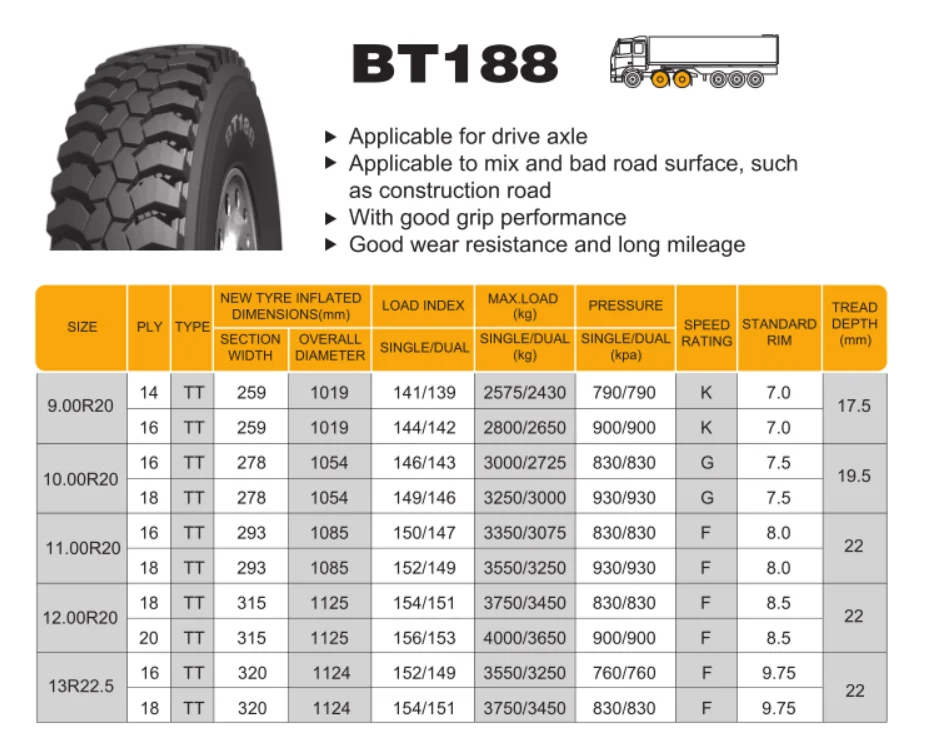 Here are various methods to calculate winter tire wear and prevent it.
Here are various methods to calculate winter tire wear and prevent it.
Shopicar.com, 100% online, shop for your next car, buy online and get it delivered to you anywhere in Quebec!
Tread wear indicators
A quick, easy way is to refer to the tire's tread wear indicators located inside the grooves. They are bars made of hard rubber lying sideways across the tread. When the tread is flush with the wear indicators―2/32” or 1.6 mm―the tire needs to be replaced since it no longer provides effective traction on snow and ice.
Pre-winter wear level
If the depth of the tread measures less than 6/32” or 4.8 mm before the start of winter, the tire likely won't last a full season, or the equivalent of about 10,000 km. Those who plan to stretch their rubber's life one more season just to save money may wind up paying for a lot more than a new set of tires after months of heavy snowfalls.
Not all winter tires wear out at the same speed. Snow tires will generally last longer than models designed for icy conditions. Compound quality also plays a key role in tire durability.
Snow tires will generally last longer than models designed for icy conditions. Compound quality also plays a key role in tire durability.
The quarter test
A classic way to measure winter tire wear is to use a quarter. Insert a 25¢ Canadian coin in one of the grooves with the caribou facing down. If you see the tip of its nose, it means the tread depth no longer meets 6/32”, so the tire probably won't last all winter or 10,000 km.
Preventing premature wear: Tire pressure
Properly inflated tires will reduce wear and save fuel. Check the tire pressure once a week if you do a lot of mileage; in any case, check at least once a month.
Inflate any tire that does not meet the recommended PSIs for your vehicle. The information can be found in your owner's manual or a specific label inside the driver's door frame.
Tire rotation, balancing, and alignment
Tires should be balanced and rotated every 10,000 km in order to prevent uneven tread wear.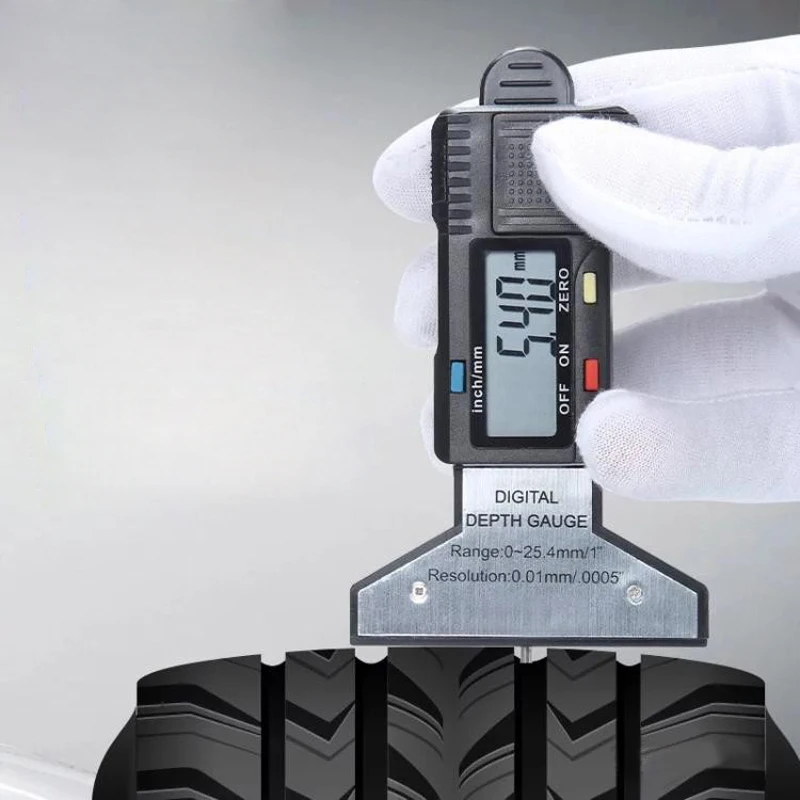 Directional tires must be rotated on the same side of the vehicle (front-rear), while non-directional tires must be rotated to form an X (ex.: front left to rear right). Tire alignment is recommended as soon as you feel that your vehicle pulls to the left or right, or when you notice uneven tread wear.
Directional tires must be rotated on the same side of the vehicle (front-rear), while non-directional tires must be rotated to form an X (ex.: front left to rear right). Tire alignment is recommended as soon as you feel that your vehicle pulls to the left or right, or when you notice uneven tread wear.
Auto123.com now invites you to consult our latest buying guides for winter tires:
The Best Winter Tires for Cars & Smaller SUVs in Canada for 2021-2022
The Best Winter Tires for Larger SUVs & Pickup Trucks in Canada for 2021-2022
The tire tread is the outer part of the wheel that provides traction in all weather conditions. The protectors inevitably wear out during the operation of the car, the working height of the slope decreases. The residual tread depth should be periodically monitored and the set of tires should be renewed in time - this will reduce the risk of losing control of the car and save the car owner from fines from the traffic police.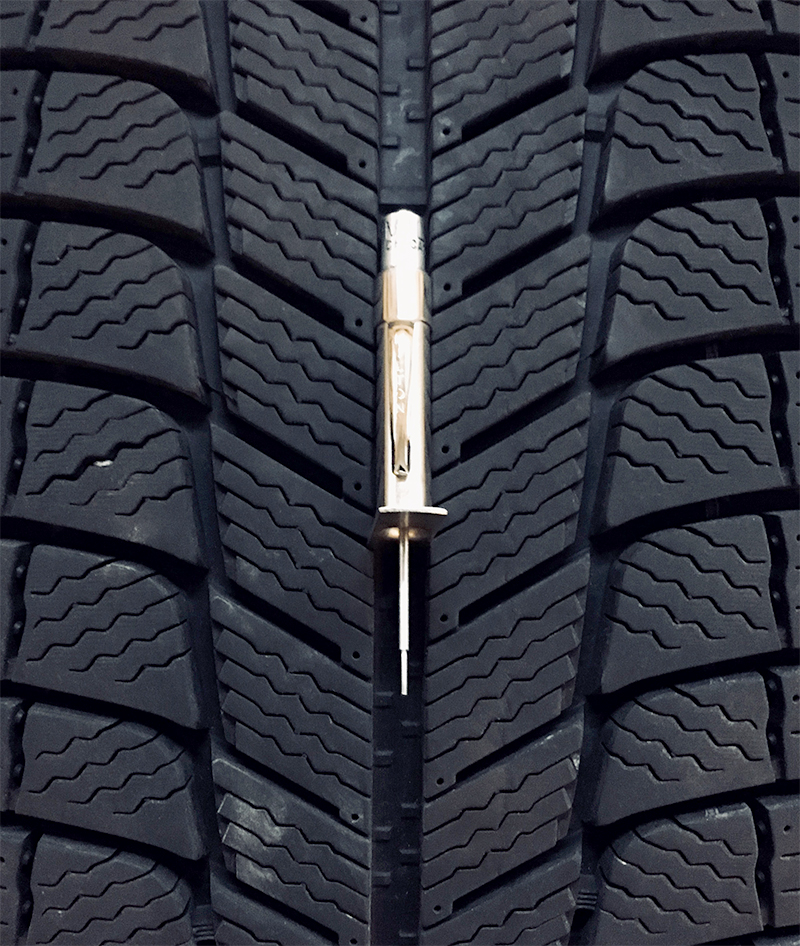
Tread wear rate depends on many factors:
Measuring the thickness of the tread layer will allow you to accurately determine the degree of tire wear and make a decision in time to replace them with new ones.
Different tires have different wear limits. Tread depth affects vehicle handling and road safety.
| According to Chapter 5 of the SDA, limiting norms for the height of the tread pattern have been established. For category M1 - passenger cars - as well as vehicles of categories N1, O1 and O2, the minimum allowable value is 1.6 mm. When using winter tires on snowy or icy surfaces - the limit is 4 mm. |
Let us explain what categories of vehicles we are talking about:
N1 - vehicles intended for the carriage of goods, having a technically permissible maximum mass of not more than 3.5 tons;
O1 - trailers, the technically permissible maximum mass of which is not more than 0. 75 tons;
75 tons;
O2 - trailers, the technically permissible maximum weight of which is over 0.75 tons, but not more than 3.5 tons.
The traffic police officer has the right to measure the residual depth with a verified device. In case of a recorded violation, a fine is imposed on the car owner.
The new summer tire has an average tread depth of 7-8 mm. The service life of summer tires is usually 3-5 seasons with average mileage and moderate driving style.
| Residual height limitation by law is 1.6 mm. However, with a remaining outer layer of 3 mm, the machine is already difficult to control, grip deteriorates, and a safety hazard arises. |
Do not wait until the critical value is reached. Make sure you change tires in advance.
Winter tires are used in severe weather conditions: low temperatures, icy conditions, on snowy road surfaces.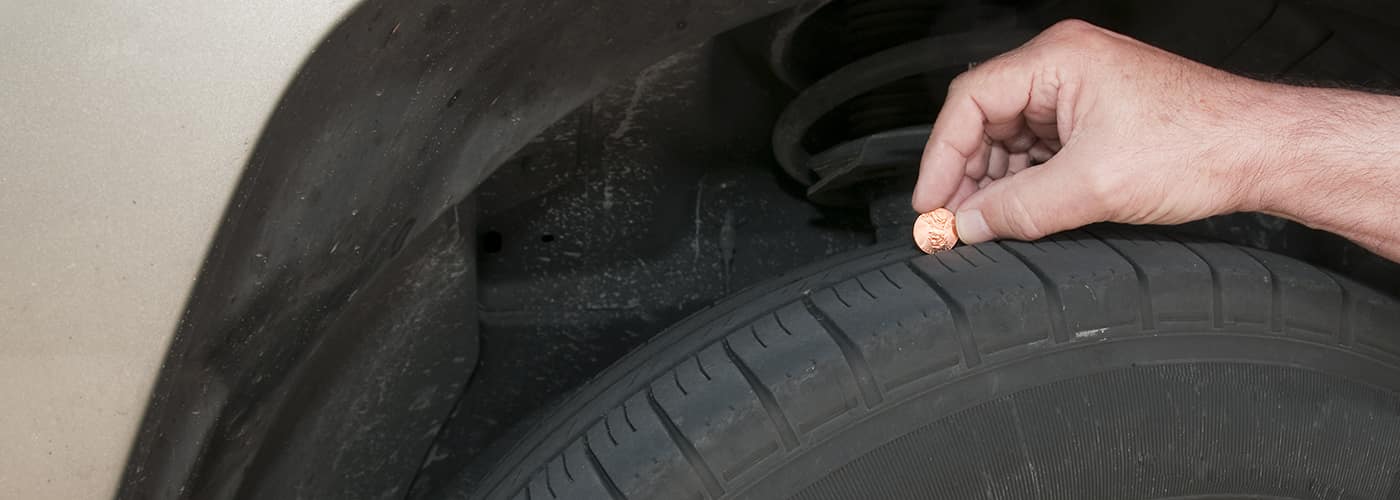 Worn elements make the tire ineffective on slippery winter roads. Accordingly, a more serious approach to the condition of the tire tread is needed.
Worn elements make the tire ineffective on slippery winter roads. Accordingly, a more serious approach to the condition of the tire tread is needed.
Non-studded friction tire (velcro) with tread depth 8-9mm. A new studded model - from 9 to 11 mm, some firms produce a tread with a height of 12-18 mm.
| If the tread wear is up to 4-5 mm, the winter set of tires needs to be replaced. In addition, the loss of more than 50% of the metal spikes is also a reason to change the car's shoes. |
The average life of winter tires is 2-4 years.
Universal all-weather is used in a temperate climate both in winter and in summer, it is optimal at temperatures from +10 to -10˚C. This type of tire is not suitable for use in snowfall or severe frosts. SDA allows the use of all-season tires in the winter if there is a special marking:
| All-season tires last 3-4 years on average. |
You can estimate the remaining tread layer in various ways:
On some tire models there are special volumetric indicators in the form of jumpers. Check: if the tread layer is worn down to the level of the jumpers, the tire is not suitable for further use.
On the surface of certain types of tires, manufacturers knock out numbers of various depths. Depreciation is assessed visually - by the visibility of individual numbers.
With the help of measuring instruments: from a metal ruler, caliper, depth gauge to an electronic tread depth gauge.
Many motorists measure the remaining tread depth with a coin. Warning: this method of measurement is not accurate. It will not show you actual tire wear figures.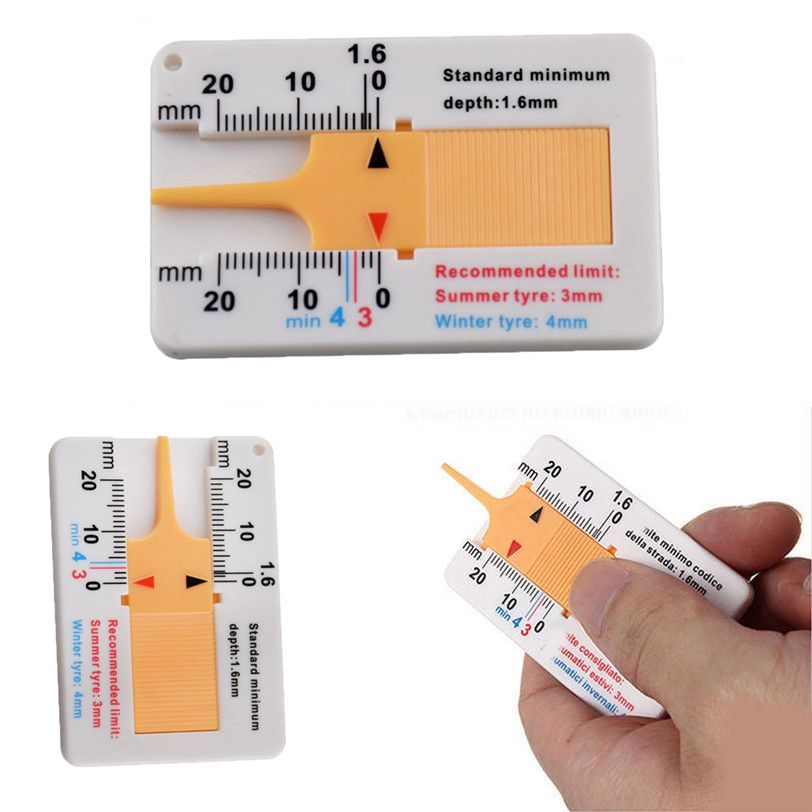
Tire tread height should be measured at least at 6 different points, preferably at 9 or even 12: in the center and from both edges of the tread, at different points around the circumference of the tire. The measurement results at all specified points must match. If they do not match, then the tire wears unevenly. The driver should find out why this is happening. Some causes of uneven tire wear are low or high pressure in them relative to the regular one, suspension failure, extreme driving style.
Old tires have become unusable, the amount of tread remaining is approaching a critical line - no need to take risks, it's time to change your car's shoes. There is a great temptation to get by with small financial costs and purchase a set of used tires. Be careful!
Sellers advertise used tires as good or excellent condition. Do not be too lazy to personally measure the height of the tread layer. And remember: for winter tires, a residual tread depth of 4 mm is already 100% wear.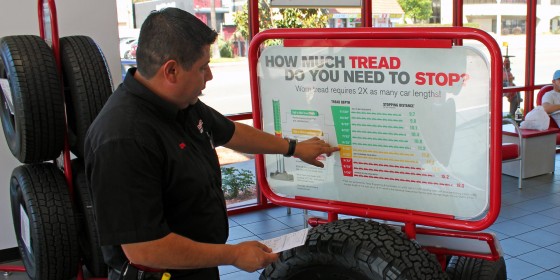
When buying used tires with tires, it is important to remember that tires from different manufacturers and seasons initially have different tread heights (when they are new). And most importantly: the tires have, accordingly, different wear limits - the tread depth at which the tire begins to lose important characteristics. These differences are most noticeable in winter and summer tires. Keep these points in mind when measuring the remaining tread depth of used tires.
The quality of domestic roads, unfortunately, does not allow tires to be used for 7-10 years. If you still decide to buy a used kit, check the year of manufacture - it is better not to consider tires older than 8 years.
there is no guarantee for tires bought from hands;
the seller can cheat - for example, offer tires from different manufacturers in one set. Some especially enterprising salesmen even cut the tread on the worn rubber, as if the tires had not yet worn out;
you will have to spend a lot of time picking up tires from private sellers - much of what is put up for sale is only suitable for recycling;
Products may have hidden or visible defects. Visible are punctures, tears, cuts. A tire with a lot of damage can collapse in motion. Hidden defects include damage to the cord, which most often occurs after punctures or a strong blow. A car with such a malfunction may wiggle on the road, and it will be unstable;
Visible are punctures, tears, cuts. A tire with a lot of damage can collapse in motion. Hidden defects include damage to the cord, which most often occurs after punctures or a strong blow. A car with such a malfunction may wiggle on the road, and it will be unstable;
the goods were stored in the wrong conditions, for example, under direct sunlight - this reduces the life of the tires and they will quickly become unusable, even if the residual tread depth is ideal;
it is not always possible to carry out a tire fitting in the presence of the seller, you will have to check the kit yourself after payment.
Without a specialist, there is a risk of buying tires that you cannot use. Don't skimp on safety. Purchasing a new set of tires will require more investment, but will pay off with a long period of trouble-free operation.
The maximum permissible residual tread depth for a passenger car is 1.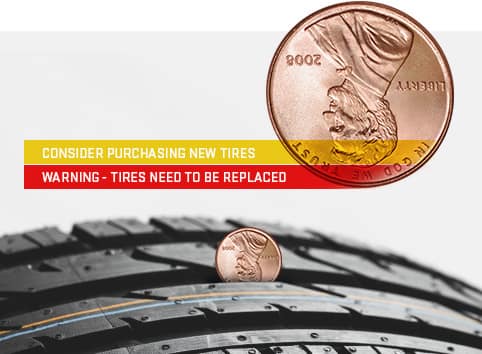 6 mm in summer and 4 mm in winter.
6 mm in summer and 4 mm in winter.
SDA strictly regulate the residual height of the tread pattern. Violation of traffic rules is a reason for drawing up an administrative protocol.
For your own safety, replace worn tires on time. Better for new ones.
| Statistics say that a third of car drivers do not know how to determine the degree of tire wear and the need to replace them. Also, not all car drivers know what is the minimum tread depth allowed by our legislation. Latvian legislation stipulates that the minimum allowable tread depth for summer tires is 1.6 mm , and, in turn, for 3 winter tires - 4 mm. Compared to other European countries, Latvia leads in this requirement, because in other regions of Europe, the requirements require a minimum tread depth of 3 mm. It should be emphasized that usually the tread depth of new tires is 6-8 mm for summer tires and 8-10 mm for winter tires. Many factors contribute to tire wear, one of which is driving style . For fans of aggressive driving, tires wear out faster because they warm up faster and begin to wear out. In addition, incorrect tire pressure , too much weight load and running gear defects contribute to tire wear. Therefore, it is necessary to regularly check the condition of the tires, because from the point of view of safety and handling, they are the most important part of the car. Every driver should carry out a visual inspection of tires at least once a month, since each tire has wear indicators, most often located in the water channels. First of all, it is necessary to assess the degree of wear of the tread. This can be done in several ways, such as using a digital tread gauge.
New tire 9 Used tire | 195 But the easiest way to tell if a tire has reached the minimum mark is to check the tread depth with a two-lat coin. |